
|

|
|
Home Site Search Contact Us Subscribe
|
|
|
Best Architecture Books of 2011 10 Books Sparking Creative Inspiration Plus Escapist Fare for Financially Fickle Times By Norman Weinstein December 15, 2011 Zoe Ryan, Allison Fisher, Elizabeth Smith, Sarah Whiting: Bertrand Goldberg: Architecture of Invention (Art Institute of Chicago/Yale University Press, $60). Goldberg’s fate as an architect in the late 20th century was to end up in architectural histories as a “one hit wonder,” his fame sustained by the corn-cob-like towers of Chicago’s Marina City, fancifully and futuristically mingling residential, commercial, and office uses. A protean and habitually untrendy Modernist, Goldberg was remarkably inventive in areas as diverse as furniture and visionary school and hospital design, a public-spirited and urbane intellectual who tweaked Miesian Modernism in charmingly outré ways. This exceptionally well written and illustrated monograph argues eloquently for lifting Goldberg from his undeserved place in The Purgatory of Unjustly Obscure Modernists. Sarah Whiting’s essay moves eloquently to the heart of the animating spirit informing Goldberg’s vision: “All architects are generalists: getting a building erected requires knowledge of structure, materials, zoning, psychology, and economics, among other subjects – the list is endless. But most architects understand these facets as constraints on their project...Goldberg, in contrast, searched for the weak spots in all of these systems of constraint.”
Jean de Loisy and Homi Bhabha: Anish Kapoor (Flammarion, $75). Kapoor’s oeuvre lovingly captured in this coffee-table monograph magnifies his intentions, blurring borders between architecture and sculpture. As the razor-sharp commentary by Harvard scholar Bhabha illustrates, Kapoor’s leviathan-sized objects essentially work as architecturally arcane generators of mythic and poetic experiences for onlookers. For architects, his art triggers interrogations of complex notions of concavity, convexity, and tropical monochromic hot-as-curry color. Urbanists in need of imaginative renewal should study the playfully distorted skylines of Chicago and Manhattan Kapoor’s pieces mirror. And Kapoor’s abstract sculptures also suggest biomorphically-charged Bollywood choreographies frozen into violently erotic public monuments. As visitors to his “Cloud Gate” crowning Chicago’s Millennium Park know, these “Alice through the looking glass” structures transform any urban spot into a mercurially daunting hall of mirrors.
Bing Thom Architects: Bing Thom Works (Princeton Architectural Press, $60). This long-overdue and intelligently assembled monograph about one of North America’s premier architects does justice to three decades worth of outstanding achievement. His Western Canadian roots show in his judicious use of heavy timber, while his Pacific Rim sensibility favors a crystalline yet relaxed minimalism inside and out, one any Zen meditator would appreciate. Consider Surrey Central City, an office tower complex where a university campus gracefully unfolds one story above a street-level shopping mall once considered moribund. Thom capably wears many hats at once: architect, urban planner, developer, educator, and music lover. Thom’s designs for performing arts centers, crowned by Washington, DC’s Arena Stage reveal a synesthetic attention to urban rhythms, translating them into graceful curvilinear undulations worthy of a tough-minded tenor saxophonist improvising to a city’s constant street sounds.
Edward Hutchison: Drawing for Landscape Architecture: Sketch to Screen to Site (Thames & Hudson, $65). Someone at the publisher should have insisted on “Sketch to Screen” as the most accurate title for this invaluable “how to” guide to drawing. While hundreds of Hutchison’s delightful sketches and finished drawings for large-scale projects are indeed centered in landscape architecture, the deep value of this text resides in his instructive method of transitioning from (largely) color pencil sketching to digital design. This method is applicable to every flavor of architecture and design, and only the most digitally-addicted need refuse Hutchison’s inviting manual of how to design grandly, thinking initially with color pencil in hand.
Ricky Burdett and Deyan Sudjic, Editors: Living in the Endless City (Phaidon, $69.95). Culled from conferences sponsored by U.K. academics and German financial experts, this sprawling assortment of articles, charts, and photos consists of fascinating probes into urban challenges facing Mumbai, São Paulo, and Istanbul. Short on simple, practical solutions, this text works best as a springboard for informed speculation and theorizing – a panoramic vision of these cities (and dozens like them globally) rapidly reaching a time when dramatic population surge and resource depletion demand bold new planning strategies. Particularly strong insights mark the Mumbai contributions, with Suketa Mehta’s “Looking for the Bird of Gold” painting a penetrating analysis of how Mumbai slum dwellers have countered layers of governmental bureaucratic inefficiency through their own self-help networks.
Lukas Feireiss, Editor: Testify! The Consequences of Architecture (NAI Publishers, $39.95). As the number of useful volumes dedicated to humanitarian architecture increase, this attractive collection of 30 worldwide success stories deserves to hold a place of special merit. Underscoring the importance of architects becoming sensitized to, and learning from, local vernacular folkways and design traditions, many impressive projects succeed in the face of staggering political violence and economic freefall. “Skateistan,” the world’s first (only?) coeducational skateboarding school engages displaced kids in war-ravaged Afghanistan with empowering recreation along with instruction in health, information technology, foreign languages, and civic responsibility. Even the seemingly simplistic act of painting geometric murals on hillside slums of Rio de Janeiro leaps from these pages as a moving testimony to how the smallest of design interventions in impoverished cities reaps immediate rewards in terms of quality of life. An edifying and rousing upbeat read.
Jan Whitaker: The World of Department Stores (The Vendome Press, $60). Can you recall when Macy’s implied at least one delectably romantic dream of America’s rising middle-class realized? I’m old enough to recall when Wanamaker’s was the supreme Philadelphia department store, a place of swanky entertainment and cosmopolitan commerce where I first heard Bach’s Fantasias on pipe organ while buying my first dress shoes from London. Or so its soles claimed. Or so my soul claims. Here’s a coffee table photo album of when the best of retail architecture meant steel-framed palaces of affordable everyday splendors for even modest homeowners. Retail palaces are so long gone now, replaced by mall “anchor” stores devolving into dollar stores for the brand conscious. Read Whitaker’s book and weep. In spite of a spate of 21st-century department store examples, Whittaker waxes elegiac in a distinguished bit of architectural history from when shopping was an art and department stores incubators of artists’ as well as shoppers’ dreams.
George Mitchell and Amit Pasricha: Mughal Architecture & Gardens (Antique Collectors’ Club, $89.50). This massive tome of 16th- through 17th-century architecture and gardens from India is the first publication in decades dedicated to Mughal art, that ultra-sophisticated synthesis of Persian, Central Asian, and indigenous Indian styles. The Taj Mahal has been the icon of Mughal architecture for centuries – but few Westerners know much of Mughal design beyond it. Mitchell is a knowledgeable writer, but emotionally detached and dryly analytic. On the other hand, Amit Pasricha’s photographs of Mughal mosques, forts, courtyards, palaces, and gardens should be considered among the most moodily atmospheric examples of architectural photography in our era.
Jeanne Gang: Reveal: Studio Gang Architects (Princeton Architectural Press, $45). Jeanne Gang’s practice reflects a rapturous curiosity about the design potential of all materials, natural and human, low-tech and high-tech. In fact, she might well embody more substantial, pragmatic, open-minded stylistic eclecticism than any architect today since materials, and not theory, primarily light her path. Her extraordinary perceptivity of how materials work in nature – the monograph opens with her study of how bird nests are constructed – serves her as a non-doctrinaire voice for sustainable urban design. The making of her Chicago residential Aqua Tower charmingly related here – perhaps partially inspired by Bertram Goldberg’s Marina City from a Chicago a half-century ago – reveals Gang’s awareness of how smart architecture can strengthen social cohesion. As was the case with Bing Thom’s book from the same publisher, this text eschews a linear historic showcase of milestone projects, and uncannily reveals the architect’s stops, starts, guesswork, and meanders, being as process-oriented and multi-dimensional a portrait of an architectural genius as any book can be.
David Adjaye, Adam Lindemann, and Peter Allison, David Adjaye: A House for an Art Collector (Rizzoli, $50). Weinstein’s review in Blueprint (October 2011).
Norman Weinstein writes about architecture and design for Architectural Record, and is the author of “Words That Build” – an exclusive 21-part series published by ArchNewsNow.com – that focuses on the overlooked foundations of architecture: oral and written communication. He consults with architects and engineers interested in communicating more profitably; his webinars are available from ExecSense. He can be reached at nweinstein@q.com.
More by Weinstein:
A Meditation on the Beauty of Zaha Hadid's Door Handle Hadid's design issues a challenge: define beauty by lyrically playing with illusion.
Why
"Greatest Hits" Lists by Architecture's Stars Should Be Mocked
Celebratory Meditations on SANAA Winning the Pritzker Prize
Op-Ed: Life After Ada: Reassessing the Utility of
Architectural Criticism
Michael Sorkin:
Architectural Critic as Scam Scanner and Urban(e) Design Sage
Book
Review: Pencils that Refuse to Die: Meditations about New Books on
Architectural Drawing
Book
Review: "One Million Acres & No Zoning": Lars Lerup's Outrageous
Encomium to Houston Instructs and Infuriates
Book
Review: Talkin' 'Bout (Not) My Generation: Uplifting Gen X Architects Showcase
Pragmatic Optimism
"Frank
Lloyd Wright's Guggenheim Museum": Bravura Example of an Architectural
Documentary - Wright's Guggenheim Done Right
Book
Review: Diving into Architecture from Every New Angle: Reading Guillevic's
"Geometries"
Book
Review: "Immaterial World: Transparency in Architecture": Marc
Kristal crystallizes increasingly complex notions of transparency with a light
touch.
Book
Review: "Visual Planning and the Picuresque" by Nikolaus Pevsner.
Edited by Mathew Aitchison
Book
Review: How New Urbanism's Case Triumphs Best Through "The Language of
Towns & Cities: A Visual Dictionary" by Dhiru A. Thadani
Best
Architecture Books of 2010
Book Review:
"Architecture and Beauty: Conversations with Architects about a Troubled
Relationship": Yael Reisner exuberantly interviews architects about beauty
Book
Review: Shedding Light on Concrete: Tadao Ando: Complete Works 1975-2010 by
Philip Jodidio
Book
Review: Sage Architectural Reflections from Architecture's "Athena":
Denise Scott Brown's "Having Words" distills a lifetime of theorizing
and practice into practical and succinct guidance for thriving through
difficult times
Book
Review: Keeping the Architectural Profession Professional: "Architecture
from the Outside In: Selected Essays by Robert Gutman" celebrates Gutman's
legacy as invaluable outsider
Book
Review: "Design through Dialogue: A Guide for Clients and
Architects," by Karen A. Franck and Teresa von Sommaruga Howard
Twilight Visions: Vintage Surrealist Photography Sheds
New Light on Architecture
Best
Architecture Books of 2009
Book Review: "Gunnar Birkerts: Metaphoric Modernist" by Sven Birkerts and Martin Schwartz A major architect in the history of Modernism finally receives recognition – and sundry asides about why Modernism never exited.
Book Review:
"Urban Design for an Urban Century: Placemaking for People," by Lance
Jay Brown, David Dixon, and Oliver Gillham
Book Review:
"Everything Must Move: 15 Years at Rice School of Architecture
1994-2009"
Book Review: A Subversive Book Every Architect Needs:
"Architect's Essentials of Negotiation" by Ava J. Abramowitz
Book Review: A Perspective from One Elevation: "Conversations With Frank Gehry" by Barbara Isenberg Gehry's conversations offer portraits of an astute listener as well as talker, an architect as aware of his flaws and limitations as of his virtues.
Best Architecture Books of 2008
Book Review: You've Got to Draw the Line Somewhere A review of Drafting Culture: a Social History of Architectural Graphic Standards by George Barnett Johnston
Book Review: "NeoHooDoo: Art for a Forgotten Faith," edited by Franklin Sirmans Sharpen your pencils - and get ready to do a NeoHooDoo shimmy.
|
(click on pictures to enlarge) 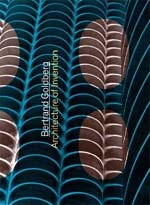
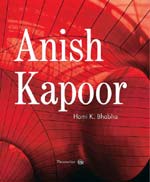
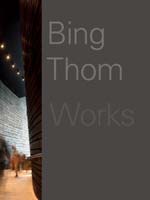
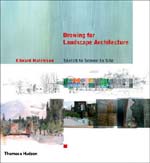
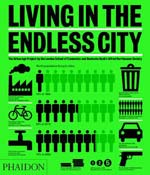
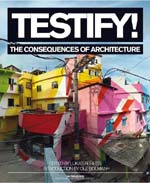
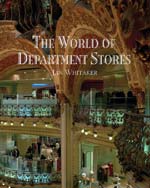
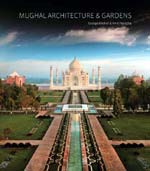
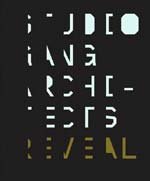
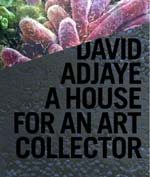
|
© 2011 ArchNewsNow.com